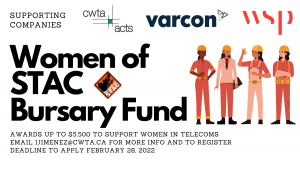Early in my career, I had a boss at AT&T Bell Labs who taught the importance of getting involved in our local communities.
He said that all of our neighbours were potential customers of AT&T and he wanted them to see that it was a good employer, and that its employees gave back to the community. Not only was community involvement the right thing to do, but he felt that it was ultimately good for the business for us to take time to get involved in activities outside of work. What we did outside of AT&T would reflect on what kind of company we worked for.
The reflection in that mirror works both ways.
I also learned a lot about the importance of diversity and inclusion in that job. We had programs to go into inner city schools to stimulate interest in math and science, to try to increase the number of young kids who might pursue those disciplines in high school and in university. The objective was to have a pool of candidate employees that were a better reflection of the markets we served. We were playing the long game.
In those days, I worked alongside doctoral physicists, graduates from music programs, geography majors, as well as the usual academic disciplines of computer science and electrical engineering. When we were building conference calling services, we ideally wanted the interface to make sense for our customers, not just the computer science people who built it.
I told you that story in order to provide background for the rest of this blog post.
Last week, I read “Women in science, engineering ‘essential'” in The Kingston Whig Standard. In the article, Heidi Ploeg, Queen’s University’s Chair for Women in Engineering, said “Engineers work on solving problems. If we don’t have a diverse set of people working on the problems, we aren’t going to ask the right questions or solve the right problems, and we’re not going to come up with the best answers.”
I agree.
 And fortunately, there is a program and bursary to help enable the pursuit of training, professional development, or academic programs for women in the telecommunications field. The Women of STAC Bursary Fund awards up to $5500 to support women in telecommunications. In addition to monetary support, the bursary recipients receive an invitation to participate at the annual STAC Conference, taking place this year from March 28-30, in which they can gain valuable learning opportunities through various sessions as well as network with STAC members.
And fortunately, there is a program and bursary to help enable the pursuit of training, professional development, or academic programs for women in the telecommunications field. The Women of STAC Bursary Fund awards up to $5500 to support women in telecommunications. In addition to monetary support, the bursary recipients receive an invitation to participate at the annual STAC Conference, taking place this year from March 28-30, in which they can gain valuable learning opportunities through various sessions as well as network with STAC members.
Under the STAC umbrella, there is a Women of STAC Mentorship Program, with a “goal of offering guidance, support, and personal & professional development to women in the telecommunications industry”.
Last year, I wrote about STAC, Canada’s Structure, Tower and Antenna Council. STAC represents the people who are actually building Canada’s advanced digital networks.
I hope you will join me in encouraging women to apply for the Women of STAC Bursary Fund. “If we don’t have a diverse set of people working on the problems, we aren’t going to ask the right questions or solve the right problems.”
I also hope you will take a look at participating in this year’s virtual conference in late March.

This is a great outcome from an organization that began only a few short years ago.
The female leaders that help craft what STAC is today should be proud of their contribution to the greater organization and this program in particular. Jeannie Piercey and Sharon Gravelle were two key contributors.